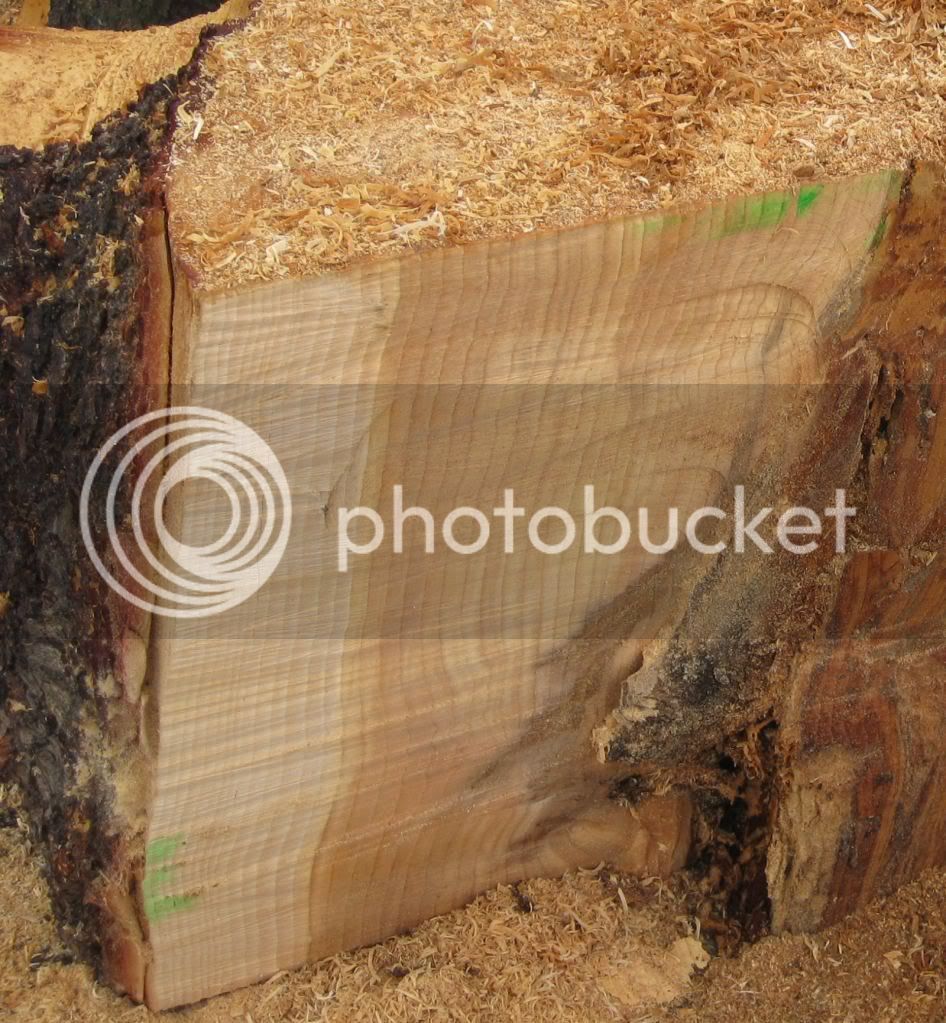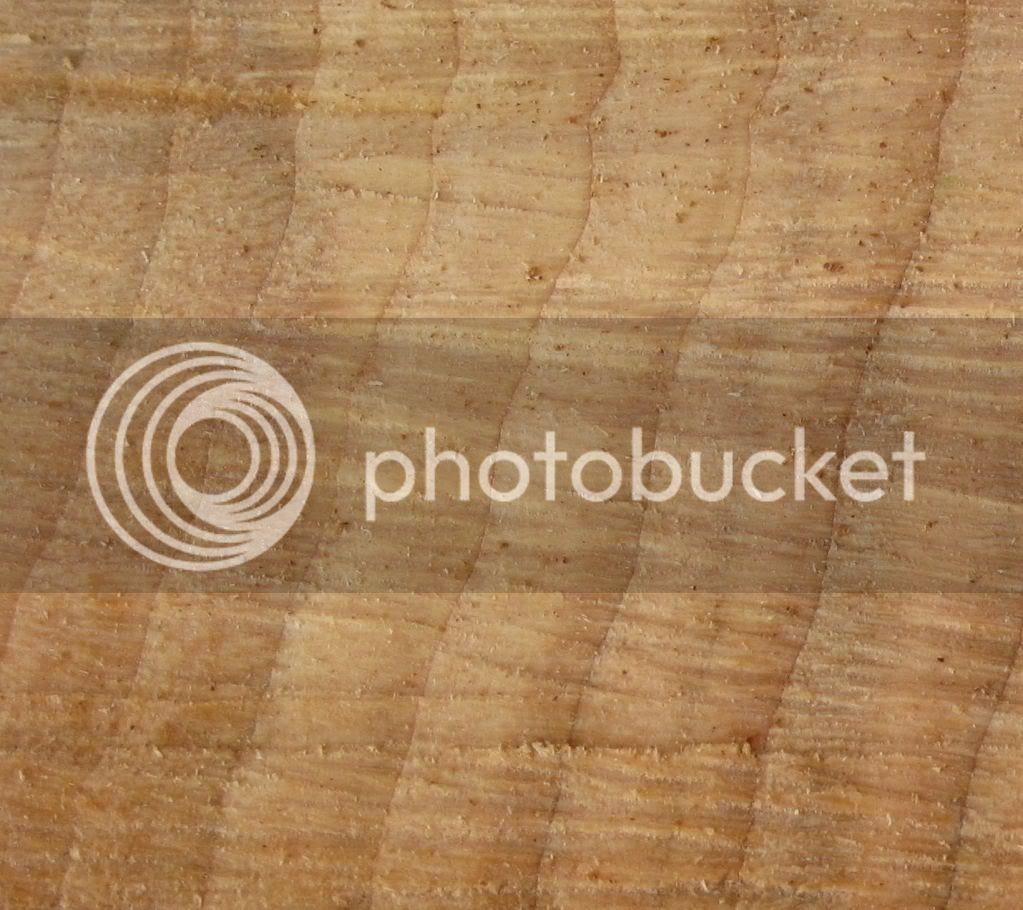That pic of the block with the bark removed really looks like Hemlock to me. For one, Hemlock bark does tend to come off rather easily like that. But then again, so do some of the True Firs. The other thing that sticks out to me is the small deep-purple-almost-black bark inclusions at the near side of the piece in the barkless photo, in the crotchwood where the big branch met the trunk. Hemlock is notorious for these blackish inclusions, and more often, black mineral streaks and lines in the wood which can be quite beautiful. Hemlock also tends to have very dark, almost black knots.
Rip that piece in half freehand with a saw and let's see what you've got in there!
Some gov.bc.ca info on Western Hemlock:
http://www.for.gov.bc.ca/hfd/library/documents/treebook/westernhemlock.htm
This only goes to support the Hemlock theory IMO. The main reason that Hemlock is so favored for heavy-wear uses (flooring, stair treads, trim/molding, window and door frames, handrails and newel posts...) is that in addition to its being fairly hard, there is a comparatively small difference between the hardness and durability of the springwood vs. summerwood (known as an "even grain" in grading circles). If you were to put a Pine or D. Fir board down for a stair tread, in a few years you'll have very distinct ridges where the softer springwood has worn away leaving the harder summerwood proud from the surface of the board. With Hemlock this effect is significantly reduced.
As per the branch size, Hemlocks have what is called a "drooping leader" top due to the way their needles are arranged flatly on their branches. On Spruce, Pine, and Douglas Fir, the needles are radially arranged and can collect light from any direction, but Hemlocks, along with Yews and many Cedars etc., have needles arranged in a flat "spray" pattern and only collect light for photosynthesis effectively on one side. Thus, the top tends to droop over so it faces the sun. This makes these trees very susceptible to broken tops due to wind or heavy snow. If a top breaks out at a young enough age, the highest branch(es) will take over as the new top, as in most trees, sometimes resulting in some really gnarly tops and large and irregular limbs. Not saying that's the case here for sure though.















